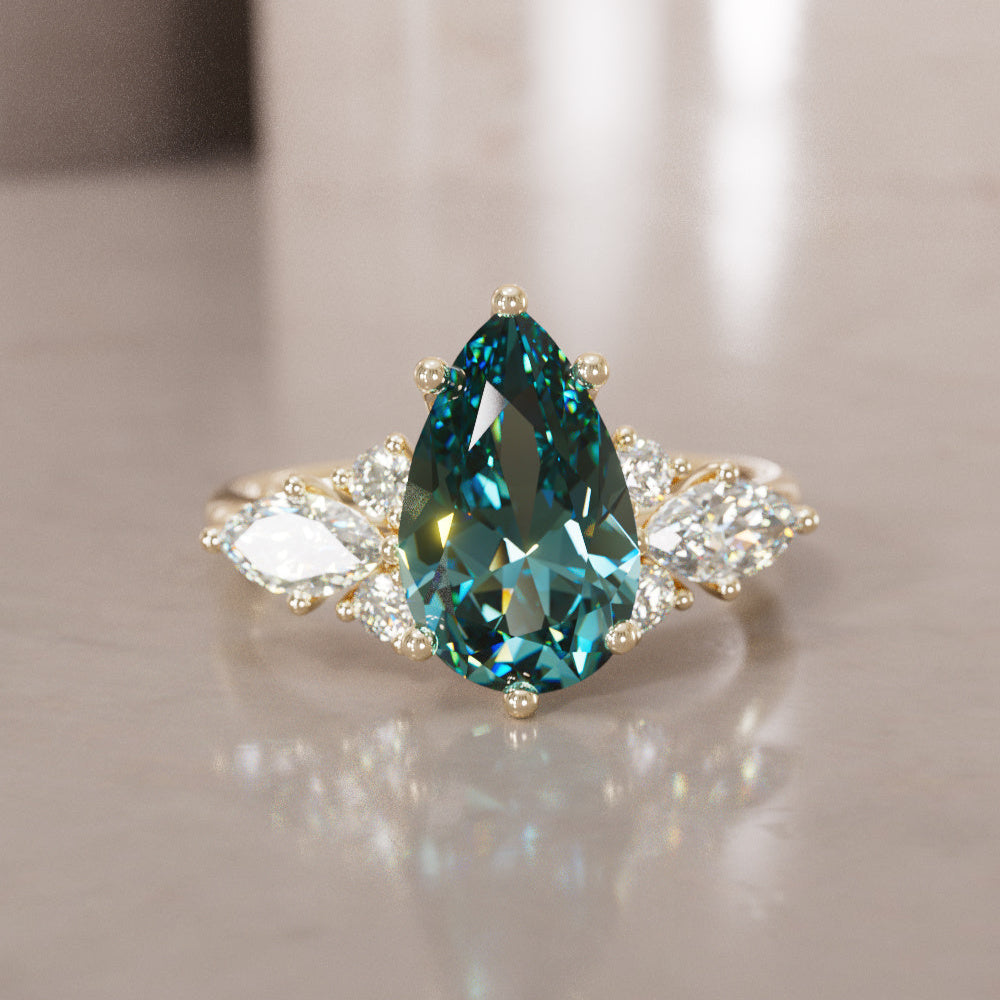5 Engagement Ring Trends to Avoid: The Metals & Gemstones You Shouldn't Buy
Watch the Video
Introduction
When it comes to choosing an engagement ring, it's important to consider not only its beauty but also its durability and ethical sourcing. With so many trends in the jewelry industry, it can be overwhelming to navigate through the options and find the perfect ring. In this comprehensive guide, we will discuss the engagement ring trends to avoid to ensure that you make an informed and responsible choice.

Trend 1: Gemstones to Avoid for Engagement Rings
Gemstones are a popular choice for engagement rings, but it's crucial to select stones that can withstand everyday wear. Certain gemstones may be visually appealing, but they are too soft and brittle to stand the test of time. Opal, labradorite, moonstone, agate, quartz, and turquoise are examples of gemstones that fall into this category. While they may look stunning initially, they are prone to cracking, scratching, and shattering over time.
To determine the durability of gemstones, it's important to consider the Mohs hardness scale. This scale measures the density of stones, with higher numbers indicating greater strength. Opals, for instance, have a hardness of about 5 on the Mohs scale, while diamonds, the hardest material, score a 9-10. To ensure the longevity of your engagement ring, it's advisable to choose stones with a hardness rating of 7 or higher.

Trend 2: Metals to Avoid for Engagement Rings
The choice of metal for an engagement ring is not just about aesthetics but also durability. While sterling silver may seem appealing due to its affordability, it is a soft metal that is not suitable for everyday wear. Sterling silver is prone to tarnishing and requires constant cleaning and maintenance to keep it shiny. Additionally, its softness makes it less secure for holding gemstones, increasing the risk of stones falling out and requiring frequent repairs.
It's essential to choose metals that are both durable and ethically sourced. While gold is a popular choice, it's important to opt for certified fairmined gold. Lower karat golds like 10k gold, may be less expensive, but it may not meet durability standards so best to opt for 14k gold-18k gold. Just like silver jewelry, there is a durability threshold for gold as well and you should stay away from 22-24k gold as it will be too soft in the long run. By selecting metals that are certified fairmined, you can ensure that your engagement ring is not only durable but also responsibly sourced.

Trend 3: Designs to Avoid for Engagement Rings
Engagement ring designs play a significant role in both aesthetics and practicality. While certain trends may be visually appealing, it's important to consider their long-term durability. Delicate and dainty designs, for example, may be trendy, but they are more prone to breakage and warping over time. These designs often feature thin bands and small prongs, which can easily break off or wear down.
On the other hand, overly traditional designs should also be avoided. While classic styles may have stood the test of time, they may not necessarily reflect your personal style or values. It's important to find a balance between timeless elegance and individuality, opting for a design that complements your personality and stands out without being overly trendy or traditional.

Trend 4: Avoid Mass-Made Jewelry: Choose Quality and Care
In the age of mass production, it's essential to avoid engagement rings that are mass-made and lack attention to detail. Fashion jewelry marketed as engagement rings or wedding jewelry often prioritizes trends over quality and durability. These pieces are designed to be trendy rather than lasting for many years of everyday wear. Delicate and petite designs may be visually appealing, but they are more likely to break and warp over time.
To ensure the longevity of your engagement ring, it's crucial to choose designers and retailers that stand behind their work. Look for artisans who prioritize craftsmanship and create ethical, high-quality jewelry. By selecting a reputable designer, you can be confident that your engagement ring is not only visually stunning but also built to last.

Trend 5: Making Ethical and Eco-Friendly Choices
When it comes to choosing an engagement ring, it's important to consider the ethical and environmental aspects of your purchase. Opting for stones and metals that are responsibly sourced ensures that your ring does not contribute to unnecessary environmental degradation or unethical practices. By choosing certified fairmined gold, for example, you can support mining communities and minimize the negative impact of gold mining on the environment.
In addition to ethical sourcing, it's crucial to consider the overall sustainability of your engagement ring. Choosing durable materials and timeless designs reduces the need for frequent repairs or replacements, minimizing waste and resource consumption. By making a conscious decision, you can create a meaningful and sustainable symbol of love.
Conclusion and Final Thoughts
Choosing an engagement ring is a significant decision that requires careful consideration. By avoiding gemstones that are too soft and brittle, opting for durable and ethically sourced metals, and selecting designs that balance individuality with longevity, you can ensure that your engagement ring stands the test of time. Additionally, by choosing quality over mass-produced fashion jewelry and prioritizing ethical and environmentally practices, you can make a meaningful and responsible investment in your future. Remember, an engagement ring is not just a piece of jewelry—it's a symbol of your love and commitment. Choose wisely, and may your ring shine brightly for a lifetime.
Explore our Ethical Engagement Ring Collection Here >




















Leave a comment